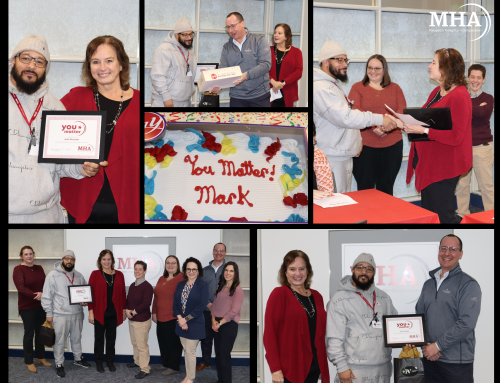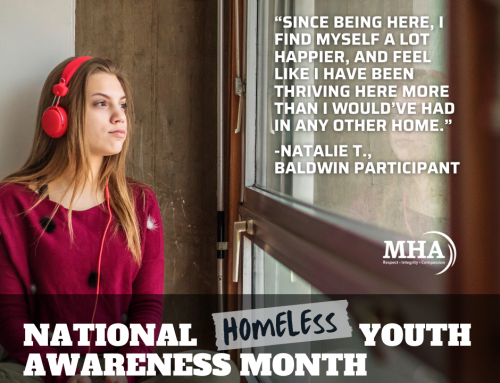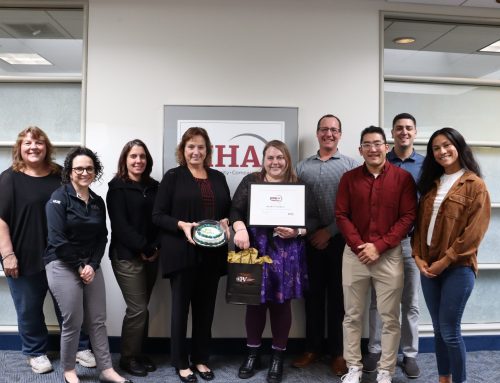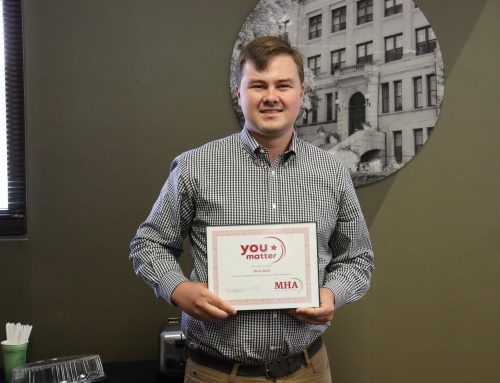Twenty-year-old Samantha Michaelson is a student at Holyoke Community College, working toward her degree in Deaf Studies. Samantha has a form of autism which makes reading, English comprehension and expression challenging, and also affects executive functioning skills, processing speeds and auditory comprehension. But back in high school she connected with a group of students in a class for deaf students and discovered a different way to communicate: American Sign Language (ASL).
“I was in special ed since I was diagnosed at three years old with Asperger’s syndrome,” Samantha said. “I grew up in a household that was not accepting of how my disabilities actually affect me. For one thing, I’m not good with reading comprehension and following directions. It can be difficult living with hidden disabilities because there can be too much expected of me. People don’t see the aftereffects of a system overload.”
As a student at East Longmeadow High School, Samantha discovered that Willie Ross School for the Deaf had a partnership campus at E.L. High. It allows Willie Ross students to be selectively integrated with hearing peers in their grade. “I thought ASL was interesting so I wanted to interact more with the ASL students,” she recalled. “I grew to love the deaf community and culture. I found my passion.”
Samantha’s passion is markedly visible as she explains that ASL offers an entirely different way to communicate and comprehend. “ASL is a completely visual language,” she said. “It’s three-dimensional, combining things like facial expression, body location, hand shapes and positioning. In ASL, expression is actual grammatical structure. Facial expression can tell you that I’m asking you a question. I find ASL helps me to conceptualize language more effectively.”
Samantha is currently in her second year at HCC and excelling. “I’m taking three classes at a time and focusing on my grades,” she said. “Since my processing is slower, I have many accommodations through HCC. As long as I utilize those and keep talking with my professors to ensure my success, I should be good. To graduate with my Associate’s in Deaf Studies, I’ll have to finish the core requirements plus ASL 1 through 4, deaf studies, deaf culture, deaf literature and a practicum in the field. I’m not in a rush and my grades are good. I’ll get there.” Spend five minutes with Samantha and you know she will.
At HCC, Samantha is Treasurer of the American Sign Language Club. “I’m going with the club to Gallaudet University in Washington, D.C., for their academic bowl,” she said. “We’ll be watching student academic teams from other deaf schools compete.”
What does Samantha love so much about ASL? “Listening can be passive,” she said, “but when you’re signing you’re maintaining eye contact. You have to pay attention to people because there are a lot of visual cues. It makes the conversation very personal. I think about a group of people I see at a dinner table who are talking and listening, but looking at their phones instead of at each other. Then I think about a group of deaf people sitting at the next table. In their conversation they’re engaged with one another—they have to be because that’s how their language works. ASL is accommodative for me. It is a brilliant language and a complex part of deaf culture that I love, and I’m learning more. I see myself in a career as an ASL interpreter.”
Several months ago, Samantha found herself desperate for housing and services. The Massachusetts Department of Developmental Services connected her to MHA. “Housing for me has been difficult,” she explained. “My mom wasn’t supportive of me and I moved out at 18. I was all over for a while and then moved in with my Dad. Unfortunately, my Dad committed suicide a year ago. It wasn’t easy, but help from MHA got me on my feet.”
Kim Barbero is Program Director for the Individual Supports Outreach Team in the Division of Developmental Disabilities at MHA. Kim recalled the first time she met with Samantha. “She had to give up the youth services she’d been receiving from another agency, but she made the transition to MHA and she’s doing great,” said Kim.
Samantha gets regular support from Sue Barba, an outreach worker with MHA. “Sue pretty much helps me manage my life,” Samantha smiled. “She goes over important paperwork and helps me with budgeting and bills. Those can be stressful things for me, especially when they involve reading and complete comprehension. Sue also helped me organize the apartment I’m in. Being on my own, in my own space, feels like a sanctuary. I haven’t had a real home in a long time and I love it. Sue helps me figure out grocery shopping and how to be smart with my money. Cooking…I need to work on that. I think cooking is an art and it takes a lot of time to learn to do it well.”
Outside of school, Samantha loves to immerse herself in her art and the deaf community, often combining the two. “As an artist, I like to draw and paint, and sculpt a little bit. My subjects are mostly people. I’m looking into deaf culture art and seeing a lot of deaf artists who represent the oppression of deaf people in their work. It’s fascinating.”
“We’re really proud of all that Samantha is accomplishing,” said Kim Barbero. “She’s in her own place, she gets support from Sue Barba that helps her keep life in order, and she’s doing well in college in a field she’s passionate about. She’s got so much going for herself.”
What advice would Samantha give to people who may be struggling? “Don’t be scared of other people’s judgement. I have a therapist and we talk about how my autism has affected me, and it’s helped me appreciate that without my autism I wouldn’t be as successful as I am now. What else? Avoid toxic relationships. Utilize good healthy supports that are there for the best intentions of you. Stay away from distractions like substance use or skipping school. Stay motivated, work hard and be humble. Not everything is perfect and it doesn’t have to be. Just start doing your best and keep doing it.”
These are words Samantha herself surely lives by.





